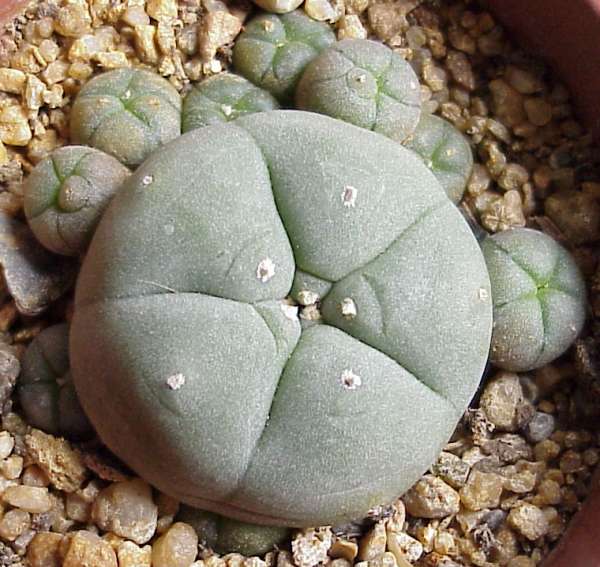The species are extremely slow growing, sometimes taking up to thirty years to reach flowering age (at the size of about a golf ball, not including the root) in the wild. So the planter should be very patient. However, cultivated specimens grow considerably faster, usually taking between three to ten years to reach from seedling to mature flowering adult. Due to this slow growth and over-harvesting by collectors, the species are considered to be in danger of extinction in the wild.
Site dedicated to the cactus and succulent. You can find care tips, fact and information about cactus & succulent and more other gardening & planting
Wednesday, September 26, 2007
Lophophora
Monday, September 3, 2007
Tips to control pests in the organic ways
1. Learn about the plants and the weeds and bugs that affect them.
2. Choose the right plants. Plant native species whenever possible. Native plants are better protected by their own “immune systems” and their relationships with other plants and animals in the area. You may also look for plants that are pest-resistant.
3. Diversifying the garden with a variety of plants will help the plants protect each other from pests. For example, small flowered plants like daisies, mint, and rosemary attract many insects that eat the pests. Check with a local garden shop or nursery for recommendations.
4. Maintain healthy, fertile soil by rotating your plants, adding compost, and mulching.
4. Plant early to avoid the worst bug season.
5. Allow growth of the pests' natural predators. Ladybugs, ground beetles, and birds eat many pests, and fungi and moss can infect the pests naturally. Spraying chemicals often kills the beneficial bugs too.
6. Get out there and work with your hands! A hoe, spade, and your hands are the best tools to combat weeds. Getting close to your plants will help you identify problems and remove pests and damaged plants by hand. Pruning plants helps remove diseased parts, leaving the plant's nutrients for the healthy parts. Always prune back to a main branch or stem; leaving "stubs" opens a door for pests.
7. Keep a garden journal in which you record when you see pests, what they look like, what they have done to the plants, and the actions taken. In this way, you will learn what works and what doesn't while experimenting with new techniques.
8. What's That Smell? Grow herbaceous plants herb aceous plant whose stem is soft and green and shows little growth of wood. The term is used to distinguish such plants from woody plants. that naturally repel pests. One of another solution is to grow garlic around roses. Aphids hate the stuff, and it will go a long way in deterring them. Other insect deterrents that you might try are marigolds and citronellacitronella, a fragrant grass, the source of a volatile oil used in perfumes and insect repellents.
9. Create a Bird Sanctuarybird sanctuary: see wildlife refuge. Use feeders, baths, and nest boxes to attract birds into your yard. Not only will garden pests diminish, but you'll also have the pleasure of enjoying the beauty of these welcome visitors.
10. When all else fails, use barriers like chicken wire to protect your prize tomatoes— try drenching mine with hot pepper spray and the rabbits attacking them just laughed.
11. Know the rodents and other animals that might visit your garden; visit your local USDA extension for information.
Source : www.thegreenguide.com and www.organicgardenpests.com
